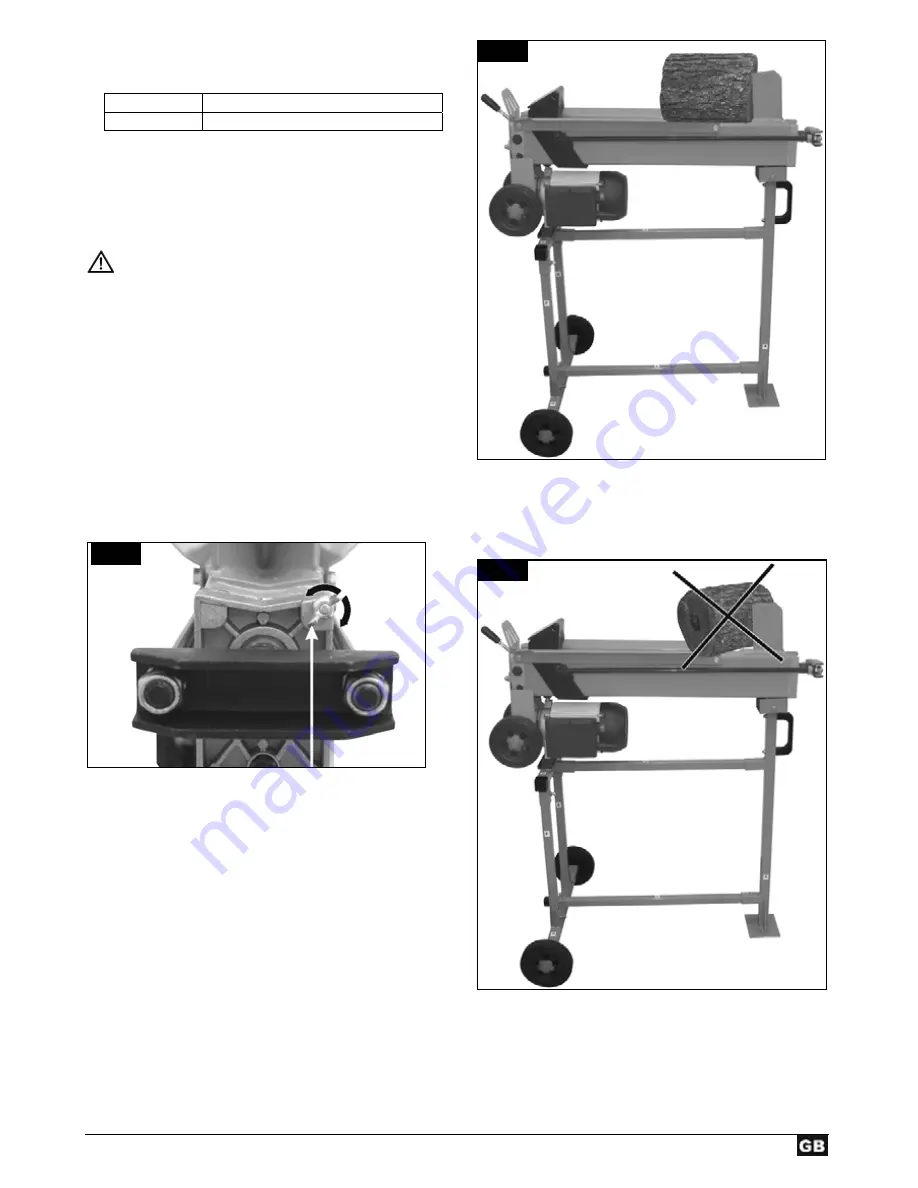
15
What type of logs can I split?
Size of logs
Length:
max. 520 mm
Diameter:
50 – 250 mm
The log diameter is a recommended guideline figure, because:
−
thin logs can be difficult to split if they contain knots or if
the fibres are too strong.
Do not try to split green logs. Dry logs are much easier to split,
and do not cause jams as often as green (damp) wood.
Hardwood tend to bursting: Exercise utmost caution!
Special instructions for splitting logs:
Preparations:
The logs to be split should be cut to the maximum dimensions
(520 mm long,
∅
50 – 250 mm). Ensure also that the logs are
cut straight and square.
Place the log properly on the log splitter, so as not to cause
any risk of stumbling or falling to the operator.
Bleeding
Open the bleed screw 3 – 4 complete turns – Fig. 2. Close the
bleed screw again when you are finished splitting logs.
bleed screw
Splitting logs:
¾
Always position the logs horizontally on the main splitter's
frame with the grain parallel to the frame. The log must be
enclosed by the log guide plates (2). Fig. 3
¾
Never place the log on the frame slant or at an angle.Fig. 4
¾
Always ensure that the splitting wedge and the log ram
contact the ends of the log at right-angles.
¾
Never try to split two logs at once.
¾
Never try to remove or replace the log during the splitting
process.
Fig. 3
Fig. 4
tighten
open
Fig. 2

































